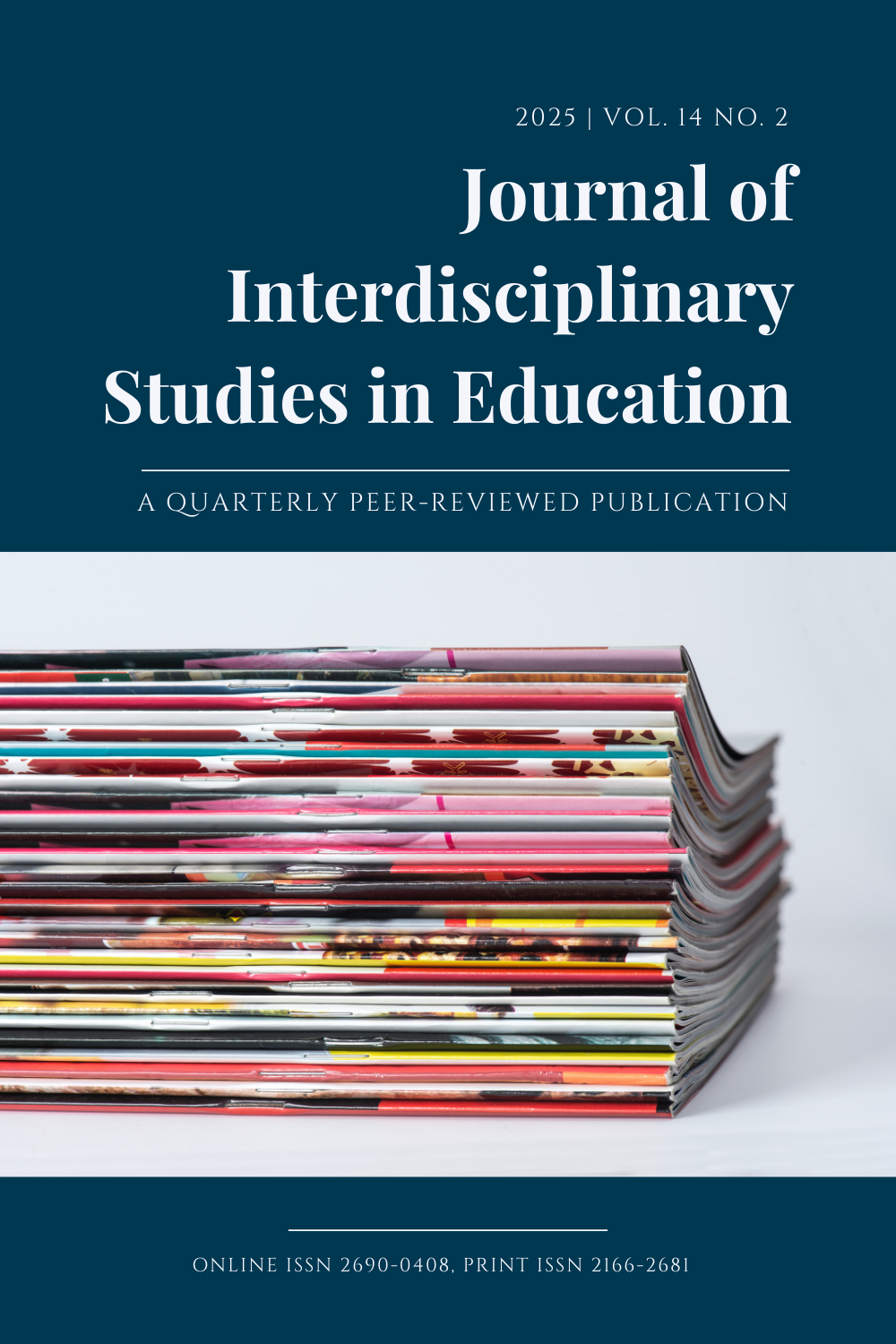The impact of student satisfaction and sense of belongingness on academic success and performance in undergraduate science majors
DOI:
https://doi.org/10.32674/v7gyzx59Keywords:
Sense of Belongingness, Student Satisfaction, Science Major, Academic PerformanceAbstract
Undergraduate students within science majors in the United States have more barriers than their peers, leading to lower rates of first-year retention and academic performance. To eradicate these barriers, research has sought to understand what factors influence retention and performance of science majors. Upon investigation, it was determined that undergraduate science majors’ levels of satisfaction with their institution and sense of belonging can impact their academic success and performance. Although dynamics influencing academic performance in science, technology, engineering, and mathematics (STEM) majors have been widely studied, very little research has sought to determine how a science major’s level of satisfaction with their institution and sense of belonging impact their academic success and performance. To investigate this, archival data including Student Satisfaction Inventory (SSI) information from science majors at a metropolitan private university in the Middle-Atlantic region of the United States were analyzed to determine how student satisfaction and sense of belonging impact academic success and performance.
Downloads
References
Amodeo, A. L., Esposito, C., Esposito, C., & Bacchini, D. (2020). Sexual minority status, anxiety–depression, and academic outcomes: The role of campus climate perceptions among Italian higher education students. MDPI AG. https://doi.org/10.3390/bs10120179
Bean, J. P., & Bradley, R. K. (1986). Untangling the satisfaction-performance relationship for college students. The Journal of Higher Education, 57(4), 393–412. https://doi.org/10.2307/1980994
Crowe, J. A. (2020). Creating a departmental climate that increases a student’s sense of belonging, perceived faculty support, and satisfaction with the major. Innovative Higher Education, 46(1), 95–109. https://doi.org/10.1007/s10755-020-09530-w
Derricks, V., & Sekaquaptewa, D. (2021). They’re comparing me to her: Social comparison perceptions reduce belonging and STEM engagement among women with token status. Psychology of Women Quarterly, 45(3), 325–350. https://doi.org/10.1177/03616843211005447
Elliott, K. M., & Healy, M. A. (2001). Key factors influencing student satisfaction related to recruitment and retention. Journal of Marketing for Higher Education, 10(4), 1–11. https://doi.org/10.1300/J050v10n04_01
Ferguson, S. N. (2021). Effects of faculty and staff connectedness on student self-efficacy. The Journal of Scholarship of Teaching and Learning, 21(2), 58. https://doi.org/10.14434/josotl.v21i2.28597
Fisher, A. J., Mendoza-Denton, R., Patt, C., Young, I., Eppig, A., Garrell, R. L., Rees, D. C., Nelson, T. W., & Richards, M. A. (2019). Structure and belonging: Pathways to success for underrepresented minority and women PhD students in STEM fields. PLOS ONE, 14(1), e0209279. https://doi.org/10.1371/journal.pone.0209279
Glass, C. R., Kociolek, E., Wongtrirat, R., Lynch, R. J., & Cong, S. (2015). Uneven experiences: The impact of student-faculty interactions on international students’ sense of belonging. Journal of International Students, 5(4), 353–367. https://doi.org/10.32674/jis.v5i4.400
Grinder, S., Kelly-Reid, J., & Mann, F. (2017). 2016-2017 Integrated postsecondary education data system (IPEDS) methodology report (2017078). U.S. Department of Education. https://nces.ed.gov/pubs2017/2017078.pdf
Hill, R. M., & Pettit, J. W. (2012). Suicidal ideation and sexual orientation in college students: The roles of perceived burdensomeness, thwarted belongingness, and perceived rejection due to sexual orientation. Suicide & Life-Threatening Behavior, 42(5), 567–579. https://doi.org/10.1111/j.1943-278X.2012.00113.x
Hu, Y., Hung, C., & Ching, G. S. (2014). Student-faculty interaction: Mediating between student engagement factors and educational outcome gains. International Journal of Research Studies in Education, 4(1). https://doi.org/10.5861/ijrse.2014.800
Johnson, M. D., Margell, S. T., Goldenberg, K., Palomera, R., & Sprowles, A. E. (2023). Impact of a first-year place-based learning community on STEM students’ academic achievement in their second, third, and fourth years. Innovative Higher Education, 48(1), 169–195. https://doi.org/10.1007/s10755-022-09616-7
Johnson, M. D., Sprowles, A. E., Goldenberg, K. R., Margell, S. T., & Castellino, L. (2020). Effect of a place-based learning community on belonging, persistence, and equity gaps for first-year STEM students. Innovative Higher Education, 45(6), 509–531. https://doi.org/10.1007/s10755-020-09519-5
Kim, H., & Hong, S. (2019). The effects of grit and academic self-efficacy on major satisfaction among students in health-related college majors. Medico-Legal Update, 19(1), 496. https://doi.org/10.5958/0974-1283.2019.00092.6
Lazarus, R. S. (1991). Emotion and adaptation. Oxford University Press.
Lazarus, R. S., & Folkman, S. (1984). Stress, appraisal, and coping. Springer.
Mendoza-Denton, R., Pratt, C., & Richards, M. (2018). Go beyond bias training. Nature, 557(7705), 299–301. https://doi.org/10.1038/d41586-018-05144-7
Mihanović, Z., Batinić, A. B., & Pavičić, J. (2016). The link between students' satisfaction with faculty, overall students' satisfaction with student life, and student performances. Review of Innovation and Competitiveness, 2(1), 37–60. https://doi.org/10.32728/ric.2016.21/3
Minin, S., Varodayan, D., Schmitz, C., Faulkner, B., Dong San Choi, & Herman, G. L. (2016). Minority merit: Improving retention with cooperative learning in a first-year electronics course. 46th Annual Frontiers in Education Conference. https://doi.org/10.1109/FIE.2016.7757611
Moriarty, M. A. (2007). Inclusive pedagogy: Teaching methodologies to reach diverse learners in science instruction. Equity & Excellence in Education, 40(3), 252–265. https://doi.org/10.1080/10665680701434353
National Center for Education Statistics. (2019). Status and trends in the education of racial and ethnic groups. National Center for Education Statistics. https://nces.ed.gov/programs/raceindicators/indicator_reg.asp
Additional Files
Published
Issue
Section
License
Copyright (c) 2024 Taziah Kenney, Kim C. O'Halloran

This work is licensed under a Creative Commons Attribution-NonCommercial-NoDerivatives 4.0 International License.







